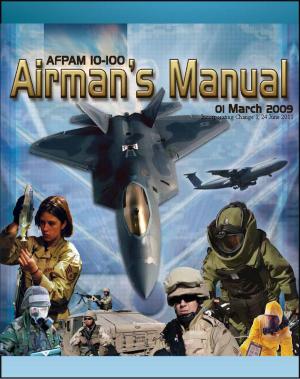Prejudicial Counsel: A Multidimensional Study of Tactical Airpower Between the Korean and Vietnam Wars - Soviets, Atomic Weapons, Nuclear Options, Dropshot, ICBMs, Sputnik, F-100, F-101, F-104, F-105
Nonfiction, History, Military, Nuclear Warfare, Aviation| Author: | Progressive Management | ISBN: | 9781311585837 |
| Publisher: | Progressive Management | Publication: | January 22, 2016 |
| Imprint: | Smashwords Edition | Language: | English |
| Author: | Progressive Management |
| ISBN: | 9781311585837 |
| Publisher: | Progressive Management |
| Publication: | January 22, 2016 |
| Imprint: | Smashwords Edition |
| Language: | English |
Professionally converted for accurate flowing-text e-book format reproduction, this unique book analyzes the Air Force's decisions made concerning the advancement of tactical conventional airpower from 1953 to 1961. This study evaluates the decision-making process at three distinct levels using Graham T. Allison's three decision-making models. First, this study examines Air Force decision-making based upon grand-strategic, systemic issues to conclude that tactical conventional airpower was given second priority to the dominant policy of strategic nuclear missions as a consequence of President Eisenhower's desire to balance the federal budget while deterring the Soviet Union. Second, an evaluation of organizational decision-making within the various units that contributed to the advancement of tactical airpower reveals that despite the lower level of emphasis, tactical airpower was not entirely neglected. Third, this paper highlights how senior Air Force individuals in key positions provided prejudiced counsel, which steered national command authorities toward the continuation of the strategy of Massive Retaliation and the subsequent repression of tactical conventional airpower. The final section of this study ties all three levels of examination together to create a comprehensive understanding of how Air Force decision-making, based predominantly on key individual's biases, impeded the advancement of tactical airpower between the Korean and Vietnam Wars. This impediment resulted in a greater loss of lives and resources during the opening months of the Vietnam War.
INTRODUCTION * Qualifications and Significance * STRATEGIC CONTEXT * Strategic Contextual Factors - Pre-Korea * Soviets, Atomic Weapons, and the USAF * The Impact of a Declining Defense Budget * The Strategic Contextual Factors - The Korean War * Tactical Airpower Use * Nuclear Options * Lessons Learned From the War * The Strategic Contextual Factors - Post Korean War * MODEL I ANALYSIS: US TACTICAL AIRPOWER FROM "NEW LOOK" TO "FLEXIBLE RESPONSE" * Model I Decision-Making * US National Security Policy During the 1950s * US Military Strategy * "DROPSHOT" * Tactical Airpower's Role * Sputnik and the Rise of ICBMs * Objections to Massive Retaliation * Was Tactical Airpower Impeded? - A Model I Answer * MODEL II ANALYSIS: AN ORGANIZATIONAL PERSPECTIVE * Model II Decision-Making * Tactical Air Command * Tactical Airpower Research and Development * Tactical Aircraft * F-100 Super Sabre * F-101 Voodoo * F-104 Starfighter * F-105 Thunderchief * Tactical Conventional Munitions * Conventional Air-to-Ground Munitions * Conventional Air-to-Air Munitions * Tactical Airpower Training * Was Tactical Airpower Impeded? - A Model II Answer * MODEL III ANALYSIS: AIR FORCE LEADERSHIP DECISION-MAKING * Model III Decision-Making * Who Plays? * What Determines Each Player's Stand? * What Determines Each Player's Impact or Result? * What is the Game? * Tactical Conventional Airpower Model III Decision-Making During the New Look * The Effect of the Launch of Sputnik * The Introduction of Flexible Response * Model III Analysis * CONCLUSIONS * Implications for the Future * BIBLIOGRAPHY
Professionally converted for accurate flowing-text e-book format reproduction, this unique book analyzes the Air Force's decisions made concerning the advancement of tactical conventional airpower from 1953 to 1961. This study evaluates the decision-making process at three distinct levels using Graham T. Allison's three decision-making models. First, this study examines Air Force decision-making based upon grand-strategic, systemic issues to conclude that tactical conventional airpower was given second priority to the dominant policy of strategic nuclear missions as a consequence of President Eisenhower's desire to balance the federal budget while deterring the Soviet Union. Second, an evaluation of organizational decision-making within the various units that contributed to the advancement of tactical airpower reveals that despite the lower level of emphasis, tactical airpower was not entirely neglected. Third, this paper highlights how senior Air Force individuals in key positions provided prejudiced counsel, which steered national command authorities toward the continuation of the strategy of Massive Retaliation and the subsequent repression of tactical conventional airpower. The final section of this study ties all three levels of examination together to create a comprehensive understanding of how Air Force decision-making, based predominantly on key individual's biases, impeded the advancement of tactical airpower between the Korean and Vietnam Wars. This impediment resulted in a greater loss of lives and resources during the opening months of the Vietnam War.
INTRODUCTION * Qualifications and Significance * STRATEGIC CONTEXT * Strategic Contextual Factors - Pre-Korea * Soviets, Atomic Weapons, and the USAF * The Impact of a Declining Defense Budget * The Strategic Contextual Factors - The Korean War * Tactical Airpower Use * Nuclear Options * Lessons Learned From the War * The Strategic Contextual Factors - Post Korean War * MODEL I ANALYSIS: US TACTICAL AIRPOWER FROM "NEW LOOK" TO "FLEXIBLE RESPONSE" * Model I Decision-Making * US National Security Policy During the 1950s * US Military Strategy * "DROPSHOT" * Tactical Airpower's Role * Sputnik and the Rise of ICBMs * Objections to Massive Retaliation * Was Tactical Airpower Impeded? - A Model I Answer * MODEL II ANALYSIS: AN ORGANIZATIONAL PERSPECTIVE * Model II Decision-Making * Tactical Air Command * Tactical Airpower Research and Development * Tactical Aircraft * F-100 Super Sabre * F-101 Voodoo * F-104 Starfighter * F-105 Thunderchief * Tactical Conventional Munitions * Conventional Air-to-Ground Munitions * Conventional Air-to-Air Munitions * Tactical Airpower Training * Was Tactical Airpower Impeded? - A Model II Answer * MODEL III ANALYSIS: AIR FORCE LEADERSHIP DECISION-MAKING * Model III Decision-Making * Who Plays? * What Determines Each Player's Stand? * What Determines Each Player's Impact or Result? * What is the Game? * Tactical Conventional Airpower Model III Decision-Making During the New Look * The Effect of the Launch of Sputnik * The Introduction of Flexible Response * Model III Analysis * CONCLUSIONS * Implications for the Future * BIBLIOGRAPHY















